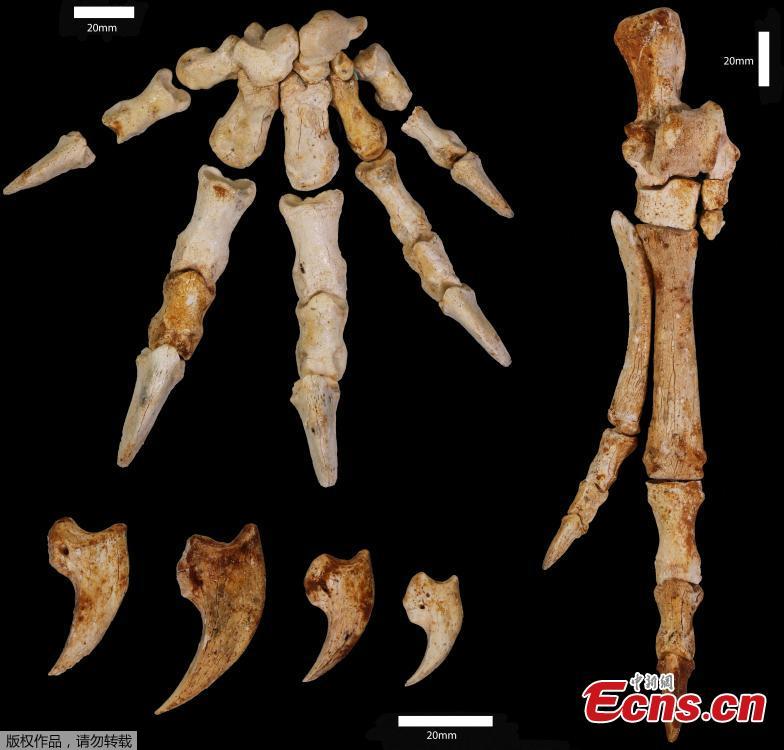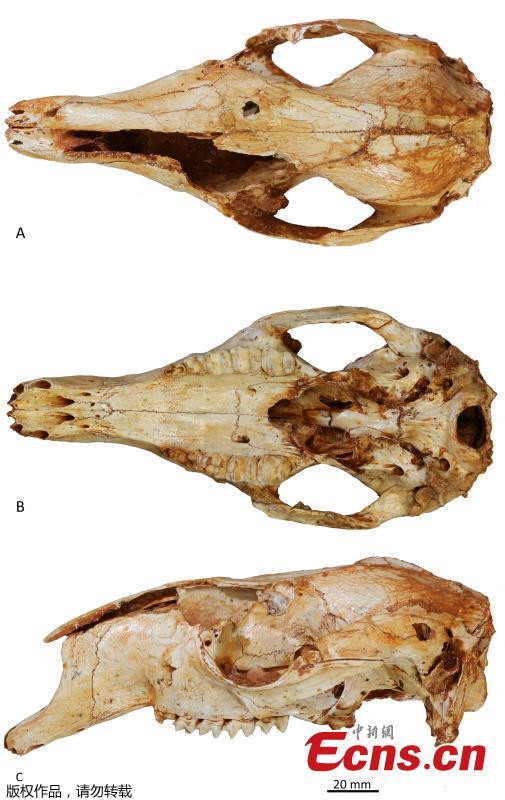
This handout image released by Murdoch University on March 23, 2021, shows preservation of the skull of the newly identified fossil tree-climbing kangaroo (Congruus kitcheneri) from the Nullarbor Plain of Western Australia. (Photo/Agencies)
The most remarkable thing about the nearly perfect fossils was not that they belonged to 40-kilo kangaroos who mysteriously evolved to climb trees. What really startled paleontologists is that southwestern Australia's Nullarbor Plain, site of the discovery, is a treeless shrubland and was thought to be that way even when the newly named Congruus kitcheneri hopped and apparently climbed across its reaches some 50,000 years ago.

This handout image released by Murdoch University on March 23, 2021, shows preservation of the skull of the newly identified fossil tree-climbing kangaroo (Congruus kitcheneri) from the Nullarbor Plain of Western Australia. (Photo/Agencies)
The most remarkable thing about the nearly perfect fossils was not that they belonged to 40-kilo kangaroos who mysteriously evolved to climb trees. What really startled paleontologists is that southwestern Australia's Nullarbor Plain, site of the discovery, is a treeless shrubland and was thought to be that way even when the newly named Congruus kitcheneri hopped and apparently climbed across its reaches some 50,000 years ago.























